When I was invited to taste the Grandes Pagos de España, or ‘great wine estates of Spain’, it sounded like a promising offer. Grande always sounds good and I was vaguely aware of what a Pago was. But there’s a bit more detail behind the proposal. Put simply, Grandes Pagos a private, non-profit association with different member wineries, or wines in fact, that self-govern and self-proclaim themselves as the greatest vineyards – grandes pagos – of Spain. The statement isn’t without ambition, but neither is the association.
Each member wine (wines qualify rather than entire portfolios of a winery, although a winery may have more than one wine – or indeed all their wines – approved) must fit a certain criteria and be approved by an independent tasting committee in a blind tasting each year. Covering 17 different viticultural zones of Spain, over 38 different grape varieties, and 28 different producers, there is a great diversity with Grandes Pagos de España which includes wines as distinct as Fino sherry and Cava through to Spanish Petit Verdot and Viognier. There are no rules when it comes to variety, region or style – the emphasis is just on quality and reputation, effectively creating a nationwide Grand Cru. So what does it take for a wine to qualify as a Grandes Pagos de España?
First of all you have to apply, or be invited to apply, to the Grandes Pagos de España. Much like a members club, but the interviews are based on blind tasting. After the wine itself is considered of high enough quality, you then reach Stage 2 which is a more rigorous selection process:
The Grandes Pagos de España requirements:
- The wine must have at least five years of recognised prestige in the market (this can be through high press ratings, a cult status or following)
- The vineyard and winery must meet rigorous quality standards, although there is no specific diktat for farming or winemaking methods
- The wine must be tasted blind and judged by an independent tasting committee (between 3 and 6 per panel) and must reach a minimum score of 16 (out of 20) each year, and each vintage
- The wine must come from a pago – which translates as a single vineyard with distinct and recognisable characteristics
After that, anything goes. “We are showing what Spain is – or what it can be,” Miguel Alonso del Yerro told me over a glass of his family’s Tempranillo. “Grandes Pagos de España is diversity.”
Considering we tasted traditional wines and varieties from well-known regions like Alonso del Yerro’s Tempranillo from Ribera del Duero or Fillaboa’s Albariño from Rias Baixas, through to wild card wines like Palacio Quemado’s Portuguese varieties grown in Extramadura and the first Viognier and Petit Verdot planted in Spain, diversity is an understatement.
The Grandes Pagos de España incorporates both rule-breaking and classic DO wines, but the focus is neither on innovation or classicism, but rather on showing the best Spain can produce – in all its different colours and expressions. There are biodynamic, organic and traditional producers all banded together; there are native varieties and international varieties; there are coastal wines, mountain wines and even desert wines; and there’s sand, limestone, chalk, clay and granite. A taste of the Grandes Pagos de España is most certainly a journey through Spain – of old and new, but all relevant to today’s Spanish wine lover.
Tasting notes from the Grandes Pagos de España
Gramona Illustros 2010 $49 🌟
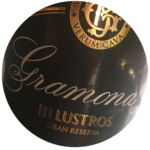 With 7 years on the lees (84 months), this is a very distinct and complex Cava. There’s a saline, mineral edge to this sparkling wine along with a funkier, earthy note and bitter almond component from a long time on the lees. There is an appealing freshness to the finish that rises above the voluptuous mouthfeel, although this is a very terroir-focused cava and is the sort of style a fan of grower Champagne would enjoy. It retails for £26 in the UK, which is a bargain.
With 7 years on the lees (84 months), this is a very distinct and complex Cava. There’s a saline, mineral edge to this sparkling wine along with a funkier, earthy note and bitter almond component from a long time on the lees. There is an appealing freshness to the finish that rises above the voluptuous mouthfeel, although this is a very terroir-focused cava and is the sort of style a fan of grower Champagne would enjoy. It retails for £26 in the UK, which is a bargain.
Bodegas Fillaboa, Selection Finca Monte Alto 2015 $26
 Fillaboa has 70 hectares in Rías Baixas but this wine comes from the best plots of a small 7-hectare vineyard making just over 14,000 bottles. Bright peach and garden herb notes are mingled with cream following a year on the lees. There is an oiliness and rich texture to this wine but the granitic soils ensure that a spine of acidity keeps it lively. A vibrant and rich Albariño.
Fillaboa has 70 hectares in Rías Baixas but this wine comes from the best plots of a small 7-hectare vineyard making just over 14,000 bottles. Bright peach and garden herb notes are mingled with cream following a year on the lees. There is an oiliness and rich texture to this wine but the granitic soils ensure that a spine of acidity keeps it lively. A vibrant and rich Albariño.
Belondrade, Belondrade y Lurton 2015 $57 🌟
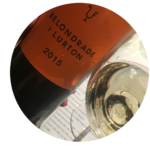 Winemaker Belondrade is known in Spain as the original maverick of Rueda for barrel ageing Verdejo and this is no exception – fermented in oak and aged for 10 months in barrel. It is a complex wine from the start with smokey, flinty notes that ride above ripe notes of warm orchard fruit. Full bodied but with great freshness and acidity to balance out the peaches and cream. Full, vibrant and refreshing. This is certainly a wine that will age very well.
Winemaker Belondrade is known in Spain as the original maverick of Rueda for barrel ageing Verdejo and this is no exception – fermented in oak and aged for 10 months in barrel. It is a complex wine from the start with smokey, flinty notes that ride above ripe notes of warm orchard fruit. Full bodied but with great freshness and acidity to balance out the peaches and cream. Full, vibrant and refreshing. This is certainly a wine that will age very well.
Pago de Vallegarcia Viognier 2015 £$28
 The first, and so far only, Viognier in Spain, this certainly eschews tradition in Castilla however it shows the warm, Mediterranean climate of the region with ripe and tropical fruit notes on the nose. There’s a fresh finish with that trademark bitterness of Viognier that nicely balances out the abundant fruit.
The first, and so far only, Viognier in Spain, this certainly eschews tradition in Castilla however it shows the warm, Mediterranean climate of the region with ripe and tropical fruit notes on the nose. There’s a fresh finish with that trademark bitterness of Viognier that nicely balances out the abundant fruit.
Palacio Quemado, Los Acilates 2014 $25
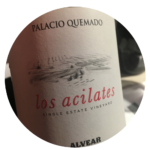 This is a field blend of Portuguese, Spanish and French varieties, and they don’t publicise which – so it could be anyone’s guess. But what this wine does show is bright red fruit, wild herbs and spice with a crunchy and fresh mouthfeel that leaves a long, ashy finish. This is a very easy wine to drink and would sit nicely with almost anything on the table.
This is a field blend of Portuguese, Spanish and French varieties, and they don’t publicise which – so it could be anyone’s guess. But what this wine does show is bright red fruit, wild herbs and spice with a crunchy and fresh mouthfeel that leaves a long, ashy finish. This is a very easy wine to drink and would sit nicely with almost anything on the table.
Marqués de Griñon Family Estates, Petit Verdot 2012 $42
 Carlos – the owner – is the founding father of the association and was also the first person to plant Petit Verdot in Spain. As a variety that is usually just reserved for blends, it is rare to be able to ripen Petit Verdot to be palatable as a single variety but this concentrated red from Central Spain achieves it – rich and spicy with a dark, perfumed and meaty nose. The peppery tannins give it a long and aromatic finish.
Carlos – the owner – is the founding father of the association and was also the first person to plant Petit Verdot in Spain. As a variety that is usually just reserved for blends, it is rare to be able to ripen Petit Verdot to be palatable as a single variety but this concentrated red from Central Spain achieves it – rich and spicy with a dark, perfumed and meaty nose. The peppery tannins give it a long and aromatic finish.
Enrique Mendoza, Estrecho 2014 $40 🌟
 Produced in Alicante on the coastal mountains, this comes from over 700m altitude and has a sandy-loam and clay-limestone soils. This is a single variety Monastrell (aka Mourvedre) and has lovely ripe berry notes, savoury fennel notes and a touch of lavender. A sparky acidity darks straight across the tongue and the finish is fresh, with a lingering peppery spice.
Produced in Alicante on the coastal mountains, this comes from over 700m altitude and has a sandy-loam and clay-limestone soils. This is a single variety Monastrell (aka Mourvedre) and has lovely ripe berry notes, savoury fennel notes and a touch of lavender. A sparky acidity darks straight across the tongue and the finish is fresh, with a lingering peppery spice.
Cortijo los Aguilares, Pago el Espino 2014 $25
 On the Sierras de Málaga, some 700m above sealevel, this is a blend of Petit Verdot, Syrah and Tempranillo. It has a very distinct nose from this unique blend of varieties and has notes of wild herbs and blackberries with a textural mouthfeel that reflects the limestone soils of this coastal region. With almost a year and a half in barrel there is a touch of sweet spice and chocolate in the nose and palate. Textural, fruity and spicy – it’s a ride!
On the Sierras de Málaga, some 700m above sealevel, this is a blend of Petit Verdot, Syrah and Tempranillo. It has a very distinct nose from this unique blend of varieties and has notes of wild herbs and blackberries with a textural mouthfeel that reflects the limestone soils of this coastal region. With almost a year and a half in barrel there is a touch of sweet spice and chocolate in the nose and palate. Textural, fruity and spicy – it’s a ride!
Mustiguillo, Finca Terrarazo 2015 $35
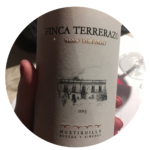 Coming from the Terrarazo mountains at 800m altitude, this 100% Bobal – a unique native variety. The wine expresses mountain herbs, flowers and dense berry notes on the nose, while the mouth has great grip and freshness. This is another textural wine, with grip and a freshness on the finish but the juicy fruit carries through to the end.
Coming from the Terrarazo mountains at 800m altitude, this 100% Bobal – a unique native variety. The wine expresses mountain herbs, flowers and dense berry notes on the nose, while the mouth has great grip and freshness. This is another textural wine, with grip and a freshness on the finish but the juicy fruit carries through to the end.
Finca Valpiedra 2010 $40 🌟
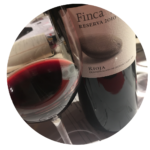 This Rioja has uplifting wild sage, bay leaf and mustard seed notes that meddle with the more classic Tempranillo aromas of red berries, leather and roasted red pepper. While it is showing some more developed characteristics on the nose it is still vibrant on the palate with lingering bright fruit and smooth, well-integrated tannins. It is a savoury and aromatic Tempranillo blended with just a touch of Graciano and Maturana. Elegant.
This Rioja has uplifting wild sage, bay leaf and mustard seed notes that meddle with the more classic Tempranillo aromas of red berries, leather and roasted red pepper. While it is showing some more developed characteristics on the nose it is still vibrant on the palate with lingering bright fruit and smooth, well-integrated tannins. It is a savoury and aromatic Tempranillo blended with just a touch of Graciano and Maturana. Elegant.
Secastilla 2012 $40
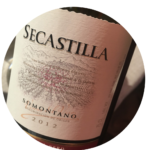 This is a large winery – owned by Gonzales Byass – but this Garnacha is just 19,000 bottles from their old vines (over 70 years) in Somontano. Up in the Pyrenees, this vineyard is over 700m in altitude and produces a peppery wine with bright red fruit notes of raspberries and cherries, with a spicy finish. It is a lively and vibrant Grenache with a great mountain freshness.
This is a large winery – owned by Gonzales Byass – but this Garnacha is just 19,000 bottles from their old vines (over 70 years) in Somontano. Up in the Pyrenees, this vineyard is over 700m in altitude and produces a peppery wine with bright red fruit notes of raspberries and cherries, with a spicy finish. It is a lively and vibrant Grenache with a great mountain freshness.
Alonso del Yerro 2013 $25
 This is a small family winery that Javier and Maria started with the help of Stéphane Derenoncourt as their consultant winemaker. They took 80 soil samples in their newly-purchased Ribera del Duero vineyard splitting their 22 hectares in 32 plots – two of which now form this wine. This 100% Tempranillo has compact notes of black fruit and graphite with peppery tannins and a fresher finish from a cooler vintage.
This is a small family winery that Javier and Maria started with the help of Stéphane Derenoncourt as their consultant winemaker. They took 80 soil samples in their newly-purchased Ribera del Duero vineyard splitting their 22 hectares in 32 plots – two of which now form this wine. This 100% Tempranillo has compact notes of black fruit and graphite with peppery tannins and a fresher finish from a cooler vintage.
Abadia Retuerta, Pago Negralada 2014 $100 🌟
 The company inherited this 700-hectare estate when not a single vineyard was left, they planted 180 hectares after buying it in 1988. This Tempranillo is their top plot which is close to the Douro river and keeps the vines cooler during the hot summers. Only made in their top years, 2014 was a year where they could achieve full ripeness which is reflected by the rich berry notes on the nose, but there is also a floral note and juicy mouthfeel to this wine. Smooth tannins tickle the palate throughout the long and aromatic finish which shows great finesse.
The company inherited this 700-hectare estate when not a single vineyard was left, they planted 180 hectares after buying it in 1988. This Tempranillo is their top plot which is close to the Douro river and keeps the vines cooler during the hot summers. Only made in their top years, 2014 was a year where they could achieve full ripeness which is reflected by the rich berry notes on the nose, but there is also a floral note and juicy mouthfeel to this wine. Smooth tannins tickle the palate throughout the long and aromatic finish which shows great finesse.
San Román 2014 $60 🌟
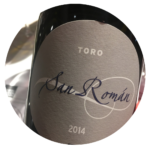 There is an alluring wild mint note hovering above the red fruit and oriental spice coming from this Tinta de Toro – Tempranillo – which spends two years in oak. The bush vines on sandy, poor soils which only survive in this warm climate because of the clay underneath. The sand on the top means that these 40-year-old vines have never been affected by phylloxera. The finish is aromatic and long – a very attractive wine.
There is an alluring wild mint note hovering above the red fruit and oriental spice coming from this Tinta de Toro – Tempranillo – which spends two years in oak. The bush vines on sandy, poor soils which only survive in this warm climate because of the clay underneath. The sand on the top means that these 40-year-old vines have never been affected by phylloxera. The finish is aromatic and long – a very attractive wine.
Valdespino, Fino Inocente $23 🌟
 This is a beautiful and complex Fino with 10 years in the solar system and comes from the Macharnudo vineyard, known as the creme-de-la-creme of Jerez. It is saline, nutty and leaves a lasting impression. Delicious Fino.
This is a beautiful and complex Fino with 10 years in the solar system and comes from the Macharnudo vineyard, known as the creme-de-la-creme of Jerez. It is saline, nutty and leaves a lasting impression. Delicious Fino.

